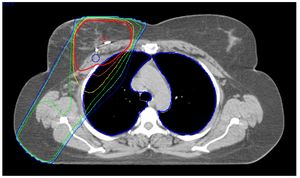A Mississippi man is among the victims killed in the collision between a commercial airliner and a Black Hawk helicopter on Wednesday evening, January 31, 2025, over the Potomac River near Washington, D.C. The crash involved American Airlines Flight 5342, which was carrying 64 people, and the military helicopter carrying three soldiers. According to multiple news outlets, including the Macon Beacon, one of the soldiers was identified as Chief Warrant Officer 2 Andrew Loyd Eaves, originally from Great Mills, Maryland. His wife, Carrie Eaves, confirmed his death on social media, asking for prayers for their family and others affected by the tragedy.
The crash unfolded just before 9 p.m. as the American Airlines flight from Wichita, Kansas, was approaching Reagan National Airport. Eyewitness reports indicate the passenger plane collided midair with the Black Hawk, which was conducting a training mission. Following the collision, both aircraft plummeted, resulting in the complete loss of all lives on board.
The National Transportation Safety Board (NTSB) has taken charge of the investigation, which is expected to produce preliminary findings within 30 days. Army officials confirmed the helicopter was involved in conducting training exercises related to government continuity measures. “Our deepest condolences go out to all the families and friends impacted during this tragedy, and we will support them through this difficult time,” said Maj. Gen. Trevor J. Bredenkamp. Recovery operations are actively underway to retrieve any remains and debris from the Potomac River.
Investigations have revealed concerning details related to the altitude of the Black Hawk. Aviation tracking data shows it may have been flying 100 feet above the allowed limit of 200 feet, potentially veering off from its assigned route. Both President Donald Trump and Defense Secretary Pete Hegseth indicated the helicopter’s higher altitude as possibly contributing to the collision. “The Black Hawk helicopter was flying too high, by a lot,” Trump stated, emphasizing the need for accountability.
Air traffic control communications at the time of the crash are also under scrutiny. Reports indicate the system combines management of both plane and helicopter traffic during low-volume hours, and there may have been confusion over the aircraft's positions. An air traffic controller instructed the Black Hawk to pass behind the American Airlines jet shortly before the collision, but questions remain about whether the warnings were effectively communicated and understood.
Former Black Hawk pilot Elizabeth McCormick remarked, “You only have visibility from the front 180 degrees. If you only have one crew chief, how much can you clear? I think this was a major issue.” The decision-making process of the air traffic controller at the time has also raised eyebrows, as one person handled workload typically divided between two controllers.
Meanwhile, stories about those onboard are beginning to surface. Many people were reportedly connected to the world of figure skating and were returning from training camps, highlighting the broad impact of the loss. The Skaters Club of Boston identified several of its members among the victims, underscoring the tragedy's reach beyond aviation.
Ongoing efforts at the crash site to recover remains and parts of the aircraft are complicated by conditions on the Potomac River. Emergency responders have worked tirelessly, recovering over 40 bodies as of Friday afternoon.
Outside experts have voiced concerns about the operational environment of Reagan National Airport, known for its complex airspace and the challenging navigational paths required for arriving aircraft. Comments from U.S. Sen. Tammy Duckworth, herself a former pilot, emphasized how difficult the situation can be for even seasoned aviation professionals: “This is not an abnormal flight profile to be in, though it is very congested airspace,” she shared.
While investigations continue, the NTSB will not only evaluate air traffic control decisions but also examine both aircrafts’ black boxes, which have been recovered and will help determine the events leading up to the collision. The imperative for safety improvements is higher than ever, as this incident marks one of the deadliest aviation crashes on U.S. soil since the early 2000s. Findings will likely instigate discussions not just about operational protocols around Reagan National but could also affect policies across national airspace safety regulations.
More details are expected to emerge as the investigation progresses, and the families of the victims will undoubtedly await answers about this tragic event, marking it as one of the most significant air disasters recognized since aviation’s safety protocols were established. The community continues to mourn, holding memorials and vigils for those lost.



